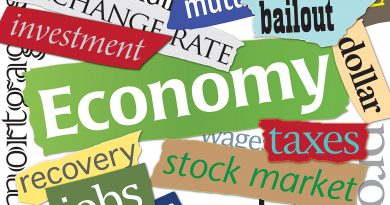EASY MONEY>BOOKSHELF
EASY MONEY>BOOKSHELF
The Motley Fool Million Dollar Portfolio: How to Build and Grow a Panic-Proof Investment Portfolio
By David Gardner and Tom Gardner
The big idea: Building a million dollar portfolio is a matter of following tried-and-tested investment strategies over the long haul, at least 10 years, namely dividend investing, blue chip bargains, small-cap treasures, emerging growth companies, international stocks, which combined create a diversified and profitable portfolio.
What’s good: The Gardner brothers present these approaches in their easy-to-understand, helpful style, explaining the rationale behind each and showing actual examples of companies that meet the criteria. They even teach you how to pick mutual funds if you’re not ready to buy individual stocks.
What’s bad: While it’s a great primer and offers solid advice, it keeps you hanging. You probably ought to hang out at Fool.com and other investing sites before you jump in the market.
Web site: www.mdpbook.com
Recommendation: Buy it
Panic: The Story of Modern Financial Insanity
By Michael Lewis
The big idea: This is an anthology of newspaper and magazine articles, reports, and post-mortems on five major market meltdowns: the 1987 US stock market crash, the 1987 Russian default, the 1997 Asian financial crisis, the 2000 dot-com mania, and the current sub-prime and global financial debacle, all of which follow the same pattern of heady bubble and subsequent bust.
What’s good: It’s edited by Michael Lewis, with an eclectic mix of interesting, at times funny, even gripping, accounts of what transpired before, during, and after each crash. It’s a good study on behavioral finance.
What’s bad: Since the accounts are written by numerous writers with different styles from various sources, reading the book can feel disjointed, you might as well just read many of the articles on the Internet.
Recommendation: Skip it
Scam-Proof Your Life: 377 Smart Ways to Protect You & Your Family from Ripoffs, Bogus Deals & Other Consumer Headaches
By Sid Kirchheimer
The big idea: There are many ways we can get scammed or ripped off by individuals and companies, and the best way to avoid such is to know how these schemes work.
What’s good: It covers a lot of ground, grouped into major categories like cars and credit cards. It’s well-researched as well, considering that the author interviewed more than 100 reformed scammers and other experts on their tactics.
What’s bad: The bulk of the content is more of a consumer’s guide to major purchases and expenses rather than a detailed and thorough study of various scams and rip-offs and ways of spotting them.
Recommendation: Browse it
A Whole New Mind: Why Right-Brainers Will Rule the Future
By Daniel H. Pink
The big idea: Left-brain logical thinking was sufficient in the knowledge economy, but in the new conceptual age, it’s no longer enough. With the age of abundance and its drive towards design, the emergence of Asia as an outsourcing power, and the increase in automation, new skill sets are needed. We need right-brain creativity and empathy.
What’s good: Dan Pink convincingly builds his case and then offers the six aptitudes or senses that are crucial to career and business success: design, story, symphony, empathy, play, and meaning.
What’s bad: The book should be a quick read and may be stretched longer than necessary and his proposed solutions, while they make a lot of sense, are based on his opinions, not research.
Web site: www.danpink.com/wnm.html
Recommendation: Browse it
[Best Sellers logo] All these titles are available at all NBS Bestsellers branches.
Why Smart People Do Stupid Things with Money: Overcoming Financial Dysfunction
By Bert Whitehead
The big idea: There are exogenous (external) and endogenous (internal) factors that can affect our finances, but most people focus on external factors like the economy, which we cannot control. What have greater impact on our finances are things we can do something about, like spending and saving.
What’s good: As a practicing planner, his approach to financial planning is quite sound and his rants about the financial services industry have solid basis.
What’s bad: While it’s written in simple language, the ideas and chapters don’t flow very well. And contrary to what you’d think the title suggests, i.e. behavioral finance, it’s really more of the author’s financial planning methodology.
Web site: www.bertwhitehead.com
Recommendation: Browse it
The First National Bank of Dad: A Foolproof Method for Teaching Your Kids the Value of Money
By David Owen
The big idea: The best way to teach kids about money is not through traditional means like opening a bank account but by giving them an incentive that appeals to them, giving them control, and allowing them to make mistakes.
What’s good: Often funny, very practical, and quite unique, the valuable lessons learned and shared by the author come from his experience, making them authentic and doable. His homegrown bank and stock exchange were great tools that taught his children the concept and discipline of saving and investing that’s closest to the real world. And he makes it sound easy to implement in your family.
What’s bad: He makes an excellent point that the best investment you can give your children is a love for reading (and therefore learning), he did take up too many pages to make his point across. But this is just a quibble.
Recommendation: Buy it
Eat This Not That! Supermarket Survival Guide: The No-Diet Weight Loss Solution
By David Zinczenko and Matt Goulding
The big idea: Beware the packaging! There are a lot of nutritional pitfalls in the grocery. Just knowing which products are good and bad for you, and making the right choices without sacrificing your taste and appetite, can significantly help you lose weight and live a healthier life.
What’s good: Looks like a Men’s Health layout (the author after all is that magazine’s editor-in-chief and the book has the same publisher), which means clean, colorful, and catchy. It’s pretty amazing how so much useful information can be packed (but not crammed) into this handy guide, thanks to the visual approach.
What’s bad: Choosing junk food with fewer calories over a competing product with more is not exactly the soundest advice. Also since this is written for Americans, some supermarket brands are not available here.
Web site: www.menshealth.com/eatthis
Recommendation: Buy it
Future Files: The 5 Trends That Will Shape the Next 50 Years
By Richard Watson
The big idea: There are 5 key trends and 55 more specific ones covering every aspect of our world in the next 50 years, and the recurring theme is one of polarization, such as high-tech and high-touch, luxury and low cost, futuristic and nostalgic, etc.
What’s good: The author certainly covers a lot of ground, grouping trends in batches of five across major categories such as Society and Culture, Science and Technology, Work and Business, etc. With his wry humor and fantastic grasp of facts, it’s easy to enjoy the ride to the future.
What’s bad: Some of the “future” trends are not so far into the future that it’s doubtful they’ll still be dominant trends in 2050. The author also plays it safe by stating that certain trends and their counter-trends may co-exist without making a bet that one would dominate. And while the book is organized well by categories, each introduced by a summary of five related trends, the sheer number of facts and commentaries can be quite confusing.
Web site: www.futuretrendsbook.com
Recommendation: Browse it
[Best Sellers logo] All these titles are available at all NBS Bestsellers branches.



